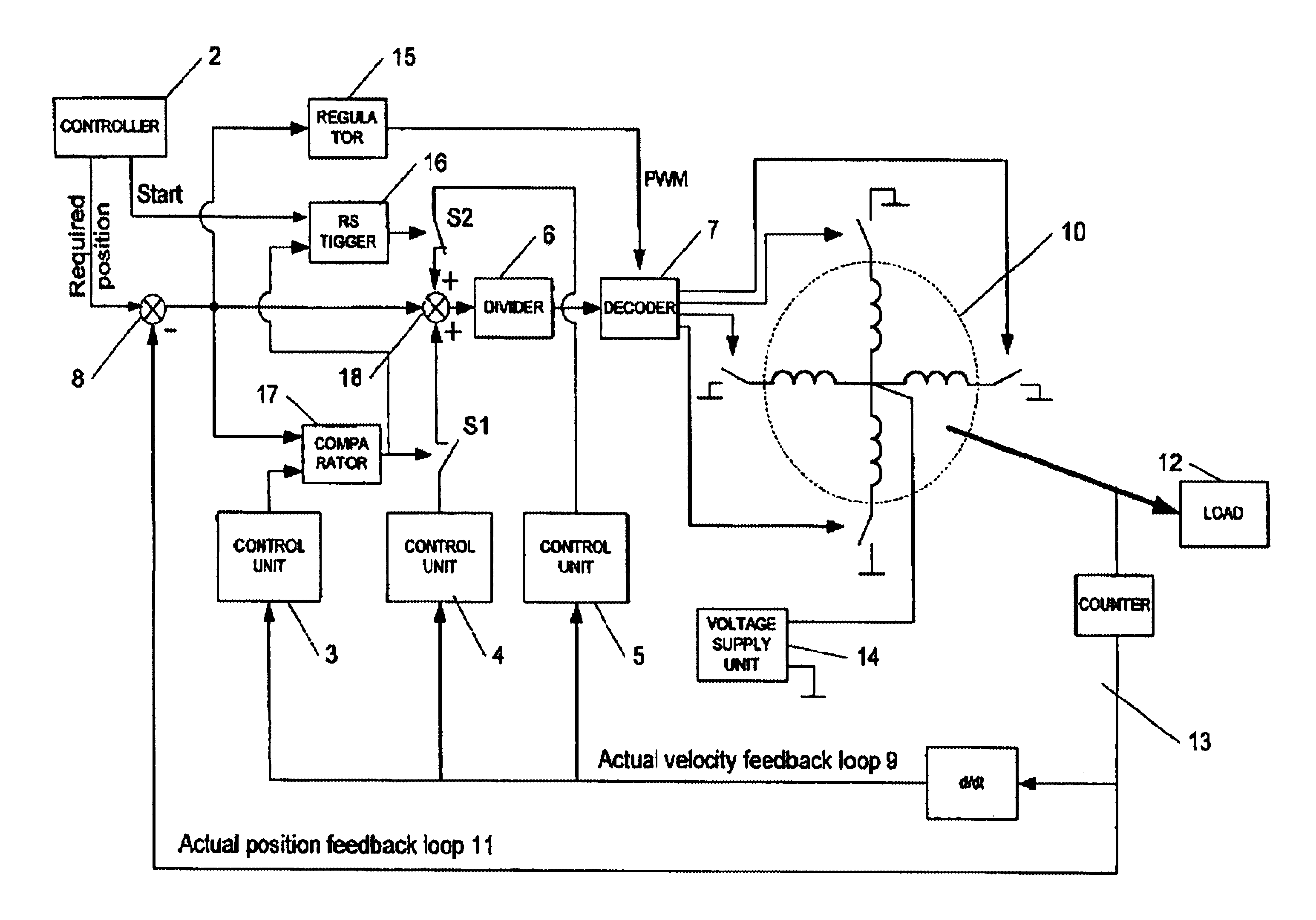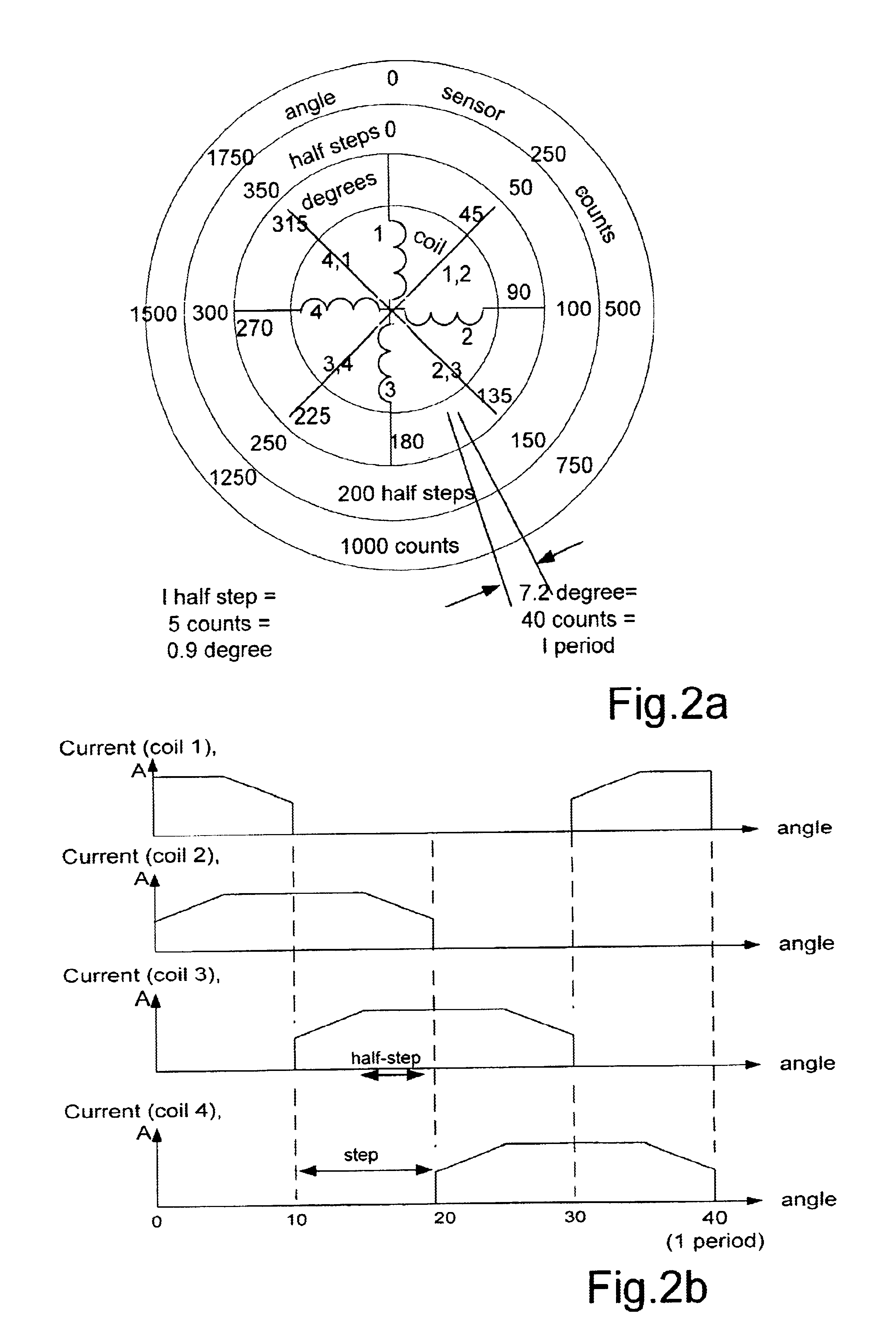Method and apparatus for controlling acceleration and velocity of a stepper motor
a stepper motor and acceleration technology, applied in the direction of electric programme control, dynamo-electric converter control, instruments, etc., can solve the problem of inability to achieve a precise target velocity, the rotor may not rotate at all, and the step loss to the extent that the rotor cannot be precisely calculated with precision, etc., to achieve the effect of improving the start-stop velocity control, less expense, and similar operating characteristics
- Summary
- Abstract
- Description
- Claims
- Application Information
AI Technical Summary
Benefits of technology
Problems solved by technology
Method used
Image
Examples
Embodiment Construction
FIG. 1 illustrates a stepper motor control circuit constructed in accordance with the present invention. A stepper motor 10 is connected to a load 12. The stepper motor 10 control circuit includes a computer / controller 2, comparators 817 for comparing the expected and actual sensor data, summator 18, divider 6 for providing a count representative of a desired position of the shaft of the motor, decoder 7 for determining the current phase to be energised and a conventional circuitry including regulator 15, RS trigger 16, switches S2 and S1, and voltage supply unit 14. All the above mentioned comparators and summators may be implemented as conventional FPGA (field programmable gate arrays) which may be easily selected by a specialist in the art from electronic components available in the market. In the present example, stepper motor 10 is a 4-phase hybrid stepper motor, such as characterised in Table 1.
TABLE 1Stepper motor example characteristicsRated voltageV12Rated currentA0.6Resist...
PUM
 Login to View More
Login to View More Abstract
Description
Claims
Application Information
 Login to View More
Login to View More - R&D
- Intellectual Property
- Life Sciences
- Materials
- Tech Scout
- Unparalleled Data Quality
- Higher Quality Content
- 60% Fewer Hallucinations
Browse by: Latest US Patents, China's latest patents, Technical Efficacy Thesaurus, Application Domain, Technology Topic, Popular Technical Reports.
© 2025 PatSnap. All rights reserved.Legal|Privacy policy|Modern Slavery Act Transparency Statement|Sitemap|About US| Contact US: help@patsnap.com



